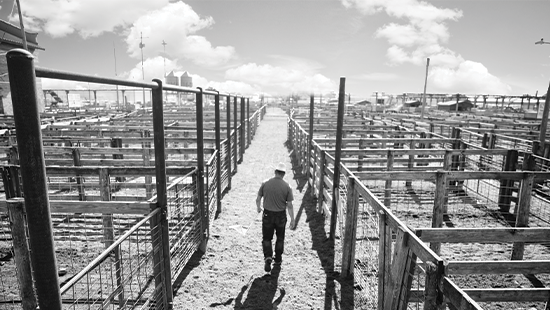We have received several phone calls and texts regarding the Paycheck Protection Program that has been rolled out recently by the Small Business Administration. We will try to share the important points that we have learned.
There are basically two types of SBA loans that we will discuss. The program in the news is the Paycheck Protection Program. The PPP loan will fund salaries, retirement expenses and health insurance expenses at a rate of 2.5 times of the average monthly amount paid by a rancher to employees. So, if a rancher has employees he or she may apply for this program. The SBA has published rules that say these loans will be forgiven. The rate of interest on the loan is 1%. We highly recommend that you call a larger commercial bank that has an SBA department if you wish to apply for the PPP loan.

The PPP loan will also be made available to farmers and ranchers that DO NOT have employees. This program is rolling out this week. Commercial banks again are a good source for these loans. However, there are differences between banks in the documentation a bank will consider for the loan. Some banks are using a Schedule F, taking the Net Profit, dividing by 12, and multiplying by 2.5 for a loan amount. As many of you know, many producers create a tax return with a negative Schedule F or a net loss. Other banks are willing to use an income statement created using Generally Accepted Accounting Principles or GAAP. These income statements would for example take into account prepaid feed that might create a loss on a Schedule F but would be added back to inventory in the case of a GAAP Income Statement. So, although banks are making SBA loans to ranchers that are sole proprietors, the rules required differ by bank. The maximum loan amount is $100,000.
SBA also has a loan called an Economic Injury Disaster Loan program. To date, this EIDL program excludes agriculture. However, there are talks ongoing and we have reason to believe that the EIDL program may be opened up to ranchers in the next wave of relief bills being debated in Congress. We will keep you updated. This could be a very good program for some producers since these loans are unsecured loans and could assist quickly with much needed working capital for ranchers.
Related to USDA, the latest news we have is the USDA funding is woefully short to pay for economic injury to all of agriculture. Crop farmers, dairy farmers, ethanol operations, pork producers, direct-sale producers and many others are all asking for funding. Some of the relief funds passed in the CARES Act in late March will not be available to USDA until after June 30, 2020. There is some reason to believe that direct payments will be a part of the program that will be based on per head for cattle producers, per hundred weight for dairy producers, and per acre for crop producers. We do expect to have more details within days. It is frustrating that USDA is moving more slowly than SBA, but we are working daily to press on these agencies to send relief sooner rather than later.
